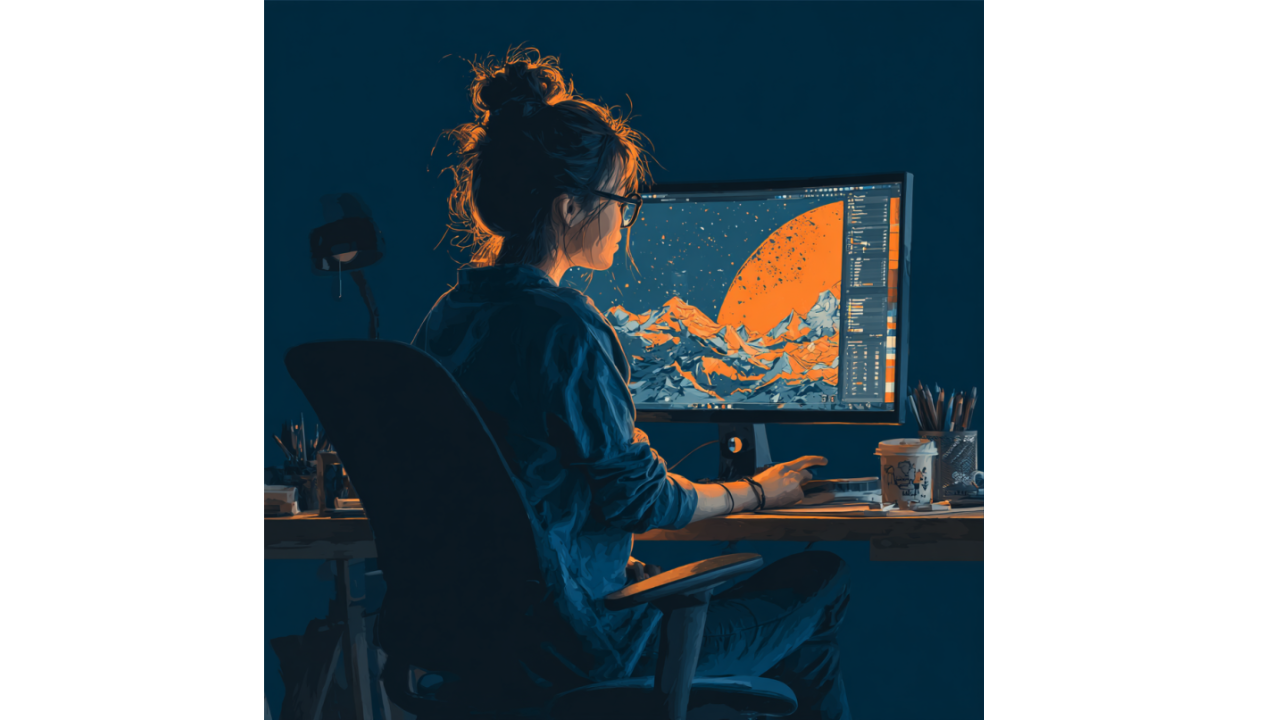Canva Magic Media: A Marketer's Guide to AI-Generated Visuals
You know that stock photo. The one with the diverse team high-fiving around a conference table. You've seen it on seventeen different websites this...
.png)
Canva just integrated Google's Veo 3 video generation model into its platform, allowing users to produce 8-second cinematic video clips with sound using simple text prompts. While design blogs celebrate this as "democratizing creativity," we need to call it what it actually is: the final nail in the coffin of traditional design careers.
This isn't about adaptation anymore. It's about complete professional reinvention or obsolescence. And if you're still thinking about yourself as primarily an "artist," you're already behind.
The Brutal Math of Your Irrelevance
Let's start with the numbers that should terrify every designer reading this. Employers expect 39% of key skills required in the job market will change by 2030. But here's what they're not telling you: for creative professionals, that percentage is much higher.
Canva's new feature—available for just $10 per month with five video generations included—represents something more sinister than convenience. It's the industrialization of video creation. "This is next-gen video creation made effortless," Canva said in its announcement. The tool supports full editing capabilities, including branding, music, and text overlays.
Translation: Everything you learned in design school about composition, timing, and visual storytelling can now be replicated by someone who's never held a stylus.
The designers who survive the next five years won't be artists—they'll be AI orchestrators, prompt engineers, and creative technologists. To prompt and instruct accurately, we need to understand mental models of logic, process, data structures, and data transformation.
Here's your brutal reality check: You're not a designer anymore. You're a creative technologist who happens to have design training.
The skill hierarchy has completely inverted. Five years ago, technical skills were nice-to-have additions to your creative portfolio. Today, creative skills are nice-to-have additions to your technical toolkit.
Prompt Engineering Mastery: Crafting effective prompts to guide AI models isn't just helpful—it's the core competency that determines whether you get hired. You need to understand how to communicate with machines in ways that produce consistently excellent results.
API Integration and Automation: Every design tool now has APIs. If you can't connect Figma to Slack to Notion to automatically generate design systems documentation, you're competing against people who can.
Data Analysis for Creative Decisions: Data analysis is still the foundation of most tech-adjacent roles, from business analytics and marketing to machine learning and data science. Your design decisions need to be backed by data, not intuition.
Cloud Infrastructure Understanding: AI workloads are resource-intensive. Proving you can manage them efficiently in the cloud is a direct path to higher-tier roles. You need to understand how your creative outputs scale across platforms.
Basic Coding Proficiency: Not to build applications, but to customize AI tools, automate workflows, and speak the same language as the developers you'll increasingly work alongside.
Technological skills are projected to grow in importance more rapidly than any other skills in the next five years. AI and big data are at the top of the list, followed by networks and cybersecurity and technological literacy.
Notice what's not on that list? Traditional design skills.
The harsh reality is that your Photoshop expertise, your color theory knowledge, your typography mastery—all of it is becoming table stakes that AI can handle. What AI can't handle (yet) is the strategic thinking, technical integration, and systems-level design that requires understanding both human psychology and machine capabilities.
Path 1: Become a Creative Systems Architect
Stop thinking about individual designs. Start thinking about design systems that can be automated, personalized at scale, and maintained by non-designers. Your role becomes building the frameworks that others execute.
Path 2: Specialize in AI-Human Interface Design
As AI tools proliferate, someone needs to design the interfaces between humans and AI systems. This requires understanding both user experience principles and machine learning limitations.
Path 3: Master Cross-Platform AI Orchestration
Our multi-model approach means everything, from design and documents to code and now video, can be generated and refined in one seamless environment. Your value becomes knowing how to choreograph multiple AI tools to produce cohesive creative outcomes.
"The skills software developers need will change significantly, but AI will not eliminate the need for them," said Arnal Dayaratna, an analyst at IDC, a technology research firm. The same principle applies to designers, but with a critical caveat: the definition of "designer" is changing so radically that most current practitioners won't recognize the role.
The new designer needs to understand:
Canva's integration of Veo 3 isn't about empowering designers—it's about eliminating the need for designers. Simply enter a text prompt, and Veo 3 will generate a short video with motion and audio. Once the clip is ready, users can use it for their presentations, add music to it, upload their own visuals, and even edit it further using Canva's built-in video editor.
This is the template for every creative tool going forward: AI generates, users customize, designers become irrelevant.
The designers who thrive won't be the ones who resist this change—they'll be the ones who embrace it so completely that they become indispensable as AI-human translators.
"All these skills are in a bubble. They can't function without one another. As long as your heart is in the tech space, you need to understand how an environment works," says Lee. Your heart better be in the tech space, because that's where design is headed.
Start learning Python this weekend. Get AWS certified next month. Build an AI-powered design system by year-end. Or start polishing your résumé for a career outside creative services.
The choice is yours, but the timeline isn't.
Ready to transform your marketing approach with AI-powered creative tools? Contact Winsome Marketing's growth experts to discover how to leverage these emerging technologies while maintaining strategic creative direction.

You know that stock photo. The one with the diverse team high-fiving around a conference table. You've seen it on seventeen different websites this...

Adobe Max 2025 just wrapped, and the through-line is unmistakable: Adobe doesn't want to sell you tools anymore. It wants to be the creative team....

Watching Figma announce its expanded AI capabilities feels like witnessing a masterclass in corporate memory erasure. The company now trumpets AI...